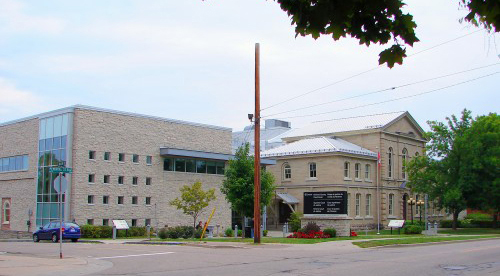Welcome!
Welcome to your CLU3M course, Understanding Canadian Law. In this course, you will explore Canadian law and uncover legal issues that are relevant to the lives of people in Canada. You will also work on developing your skills in legal thinking. As you move through the learning activities, you will recognize some areas of law that have already impacted your life and learn about other areas of law that may be new to you. By the end of this course you will be able to identify and understand the legal significance of various legal principles, cases, and events; you will gain an understanding of how the law is continuously changing to reflect an evolving society; you will be able to identify and understand the variety of relationships that operate, exist, and influence law within Canada; and you will have developed the knowledge and understanding of key legal principles required to examine legal issues through a legal lens.
In the first unit of this course, you will spend time exploring the factors and history that have shaped Canadian law. It is important to recognize that the law is fluid. It is always changing to reflect our society, beliefs, legislation, and other court decisions. Because of this, it is important to be aware of the law and how it impacts our lives every day. In subsequent units, you will be exploring criminal law, civil law, and human rights issues.

At the end of Unit 4, you will submit a culminating assessment worth 15% of your mark. This assessment will have you propose an amendment to the Criminal Code of Canada, explain why, determine how your new amendment might influence certain groups, and compose a letter to a Member of Parliament. You will have several opportunities to review, practice, and refine these skills throughout the course.
Because the law is based on opinion, communication plays an important role. Throughout this course you will have the opportunity to record your thoughts, conduct research, and reflect on your own thinking about Canadian law. Make sure to access these opportunities, as this will help broaden your perspectives.
In your first learning activity, you’re going to examine a definition of law and then consider how law manifests in everyday life. By the end of this learning activity, you will have a good understanding of how many areas of law there are, the difference between rules and laws, and how laws have changed over time. So, let's begin!
To stimulate your thinking, and before you start examining law in everyday life, consider the following quote from Martin Luther King, Jr., where he explains his view about law and order and its place in society.
“Law and order exist for the purpose of establishing justice and when they fail in that purpose they become the dangerously structured dams that block the flow of social progress.”
Notebook
You will need a notebook to complete a variety of tasks in this course. These tasks include answers to questions, graphic organizers, paragraph responses, and point-form notes. You can choose a physical notebook or a digital notebook – perhaps even both. Note-taking is important as it is a way for you to demonstrate what you have learned.
Your notebook is also useful to capture thoughts and reflections about your learning, how you learn, your motivation, perseverance, questions, goal setting, and more. It is your space to support your learning. You can add artifacts (printouts, graphic organizers, readings) from the course as needed.
Now consider the following questions and record your answers in your notebook.
- The Reverend Dr. Martin Luther King, Jr. is remembered for the way that he tried to end racial segregation in the U.S. South in the 1950s and 1960s. What do you think he is referring to in the quote you just examined? What do you think he means?
- Consider current events where you live. How does The Reverend Dr. Martin Luther King Jr.’s statement apply?
- Based on the quote, I think Dr. King could be referring to laws that oppress and punish people for no reason, rather than laws that protect people.
- I think Dr. King's quote is relevant today because there is a lot of discussion about institutions that are meant to protect people instead causing a lot of harm or acting outside the law.

Osgoode Hall, Toronto – Home of the Ontario Court of Appeal (provincial jurisdiction)
Law in everyday life
Canada has laws that affect its people every day. Whether you are hoping to rent an apartment, sell a house, get married, adopt a child, apply for a driver’s license, start a new job, need time off from work to care for an elderly parent, or are stopped by a police officer, all these actions require you to abide by the laws that are currently in place in Canada.
Do you recall the term 'jurisdiction'? Simply put, 'jurisdiction' is the idea that each level of government (municipal, provincial, and federal) has legal responsibilities for specific portfolios.

The Supreme Court of Canada (federal jurisdiction) viewed from the Ottawa River

Renfrew County Courthouse, Pembroke, Ontario (municipal jurisdiction)
Think
Why do you think that we need three levels of government to administer laws in Canada?
Press the following tabs to learn more about additional ways that Canadian law may have impacted your life today.
Notebook
Thinking about your own experiences, what is one law that is very important to you? Why is this law important to you? Use your notebook to record your answers.
One law that is important to me is the Canadian Human Rights Act because I think all people should be treated equally under the law, no matter their identity.
Try it!
For each of the following scenarios, select the law that corresponds to each case from the options provided. Then press Submit to check your understanding.
How did you do? You’ll notice that some laws are determined by the federal government, some by the provincial government, and some by municipal authorities. You’ll learn much more about the different laws in Ontario and Canada as you progress through the course.
Areas of law in Canada
Another way to assess the scope of the laws that protect and govern your everyday life is to consider them in a list. Using your Internet browser, enter the search terms "areas of law in Canada." You’ll find a list that defines approximately 17 areas of law in Canada, starting with “Aboriginal law.” Take a few minutes to examine the areas that interest you. Then, examine some of the areas of law in Canada that you will be studying in this course. Press the following tabs to know more.
A lot to think about! Have you ever been involved with any of these areas of law? Think about the ways in which your life is shaped by laws. Everyone has had their experience shaped by laws. Even the fact that you’re taking this course right now is proof that laws affect day-to-day routines.
Specific laws require specialized knowledge
Each of the areas of law you’ve just examined requires specialized knowledge. For example, if you were to attend law school, you’d be asked to choose which area of law you’d like to specialize in. Because of the subtle differences in laws, and the fact that legal cases decide important issues, it is important that lawyers (and anyone working within the legal system) be very familiar with both the subject area and the specific sets of laws.
Discover more
Use the browser of your choice to search different areas of law. You may search using key phrases like “List of different areas of law” or “Different Canadian laws.” Explore some of the ones that interest you. You probably never thought that there would be so many, or that areas such as advertising law and sports law would be included.

Notebook
At the beginning of this learning activity, you examined the following quote from Martin Luther King Jr.:
Law and order exist for the purpose of establishing justice and when they fail in that purpose they become the dangerously structured dams that block the flow of social progress.
Based on your learning, answer the following questions in your notebook.
- After this learning activity, has your understanding of his quote changed?
- What two pieces of advice would he give Canadian society today?
- At this stage, I think that while laws should protect people, they should also uplift people and promote positive change.
- I think Dr. King would advise Canadians to constantly review their laws and monitor to determine if they ever become unjust or unfair.
Self-check quiz
Check your understanding!
Complete the following self-check quiz to determine where you are in your learning and what areas you need to focus on.
This quiz is for feedback only, not part of your grade. You have unlimited attempts on this quiz. Take your time, do your best work, and reflect on any feedback provided.
Press Quiz to access this tool.
Based on your answers, reach out to your academic officer for additional support as needed.
Connecting to transferable skills
Recently, Ontario worked with other provinces in Canada to outline a set of competencies that are requirements to thrive. Ontario then developed its transferable skills framework as a set of skills for students to develop over time. These competencies are ones that are important to have in order to be successful in today’s world.
Read through the framework and the student look-fors (Opens in new window). Copy this document into your notes - you'll refer to it in each unit.
Note the indicators that you think you will develop in this course. At the end of the course you will revisit these skills to see which ones you actually developed and if your original predictions were correct.
As you continue through this unit and the rest of the course, keep your notebook updated and be mindful of opportunities to apply and develop transferable skills.


